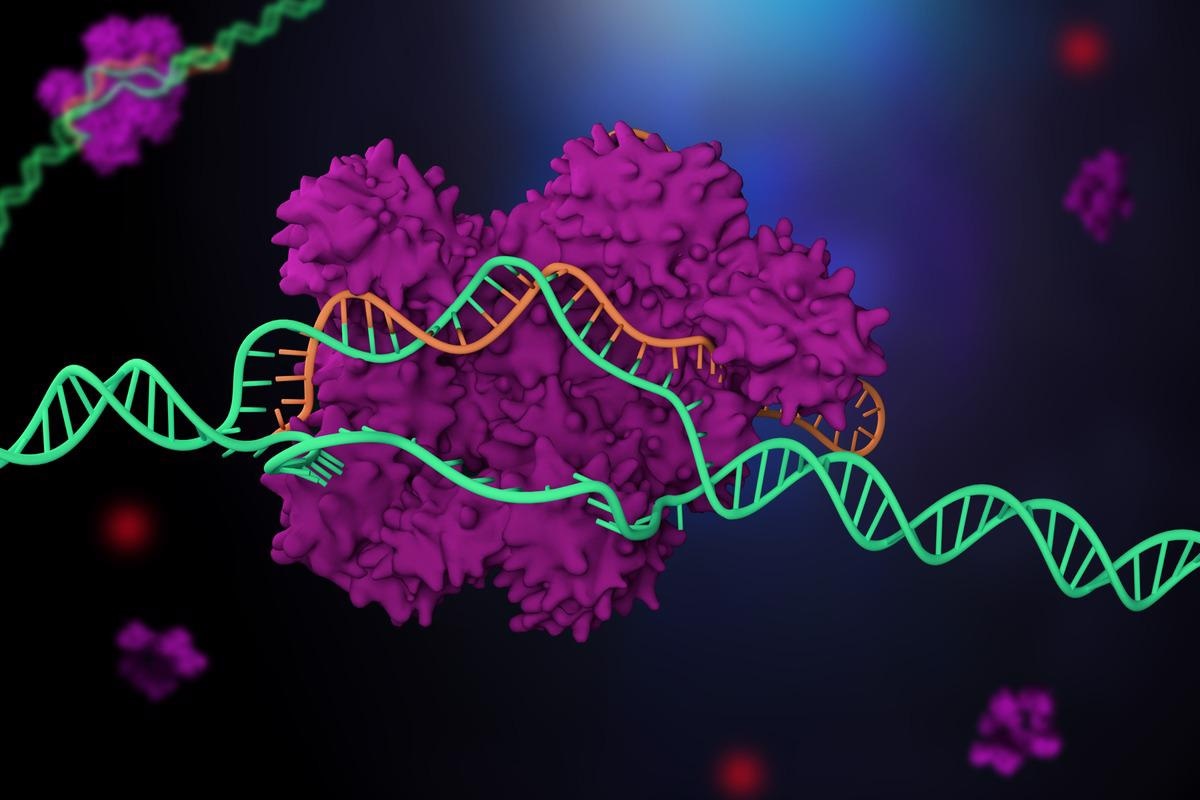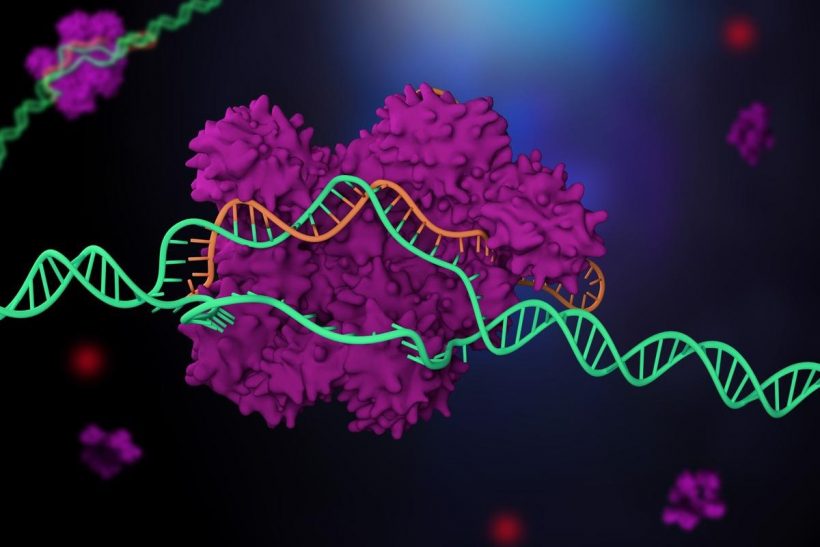In a recent study published in Cell Reports Methods, researchers evaluated the ability of CRISPR fluorescence detection system (FDS) assays to detect severe acute respiratory syndrome coronavirus 2 (SARS-CoV-2) variants in clinical samples.
 Study: Rapid detection of multiple SARS-CoV-2 variants of concern by PAM-targeting mutations. Image Credit: Meletios Verras/Shutterstock
Study: Rapid detection of multiple SARS-CoV-2 variants of concern by PAM-targeting mutations. Image Credit: Meletios Verras/Shutterstock
Currently used techniques for SARS-CoV-2 variant detection, including next-generation sequencing (NGS) diagnostic assays, such as S-gene target failure (SGTF) assay, are resource-intensive, tedious, and highly unsuitable for large-scale deployment. Although they are the gold standard for variant identification, they are expensive, low-throughput, and technically demanding.
Since most mutations in the SARS-CoV-2 genome are single-nucleotide polymorphisms (SNPs), diagnostic assays capable of detecting strain-specific SNPs with high sensitivity/specificity, scalable for use in high-throughput clinical workflows, are urgently required to screen for the prevalence of emerging VOC strains.
Moreover, these rapid SARS-CoV-2 variant detection techniques during large-scale screening efforts would help launch an effective response to the coronavirus disease 2019 (COVID-19) pandemic, especially when new SARS-CoV-2 variants of concern (VOCs) continue to emerge. Furthermore, these rapid diagnostic tests would help track the SARS-CoV-2 variant spread and understand their clinical phenotypes to inform treatment decisions.
Given the sequence specificity of SARS-CoV-2 spike (S) gene ‘CRISPR,’ several assays that use CRISPR to detect SARS-CoV-2 gene targets have received Emergency Use Authorization (EUA) for COVID-19 diagnosis.
About the study
In the present study, researchers evaluated multi-target CRISPR-Cas12a FDS assays for simultaneous detection of SARS-CoV-2 infection and genomic RNA (gRNA) from different SARS-CoV-2 VOCs for their accurate identification. The SNP detection study design helped in rapid, high-throughput VOC identification.
The CRISPR-based assay detects mutations in the protospacer adjacent motif (PAM) or seed region, spanning the adjoining six nucleotides immediately downstream of this motif of the ‘CRISPR’ gene to identify VOC-specific SNPs. These assays could also identify similar SNPs associated with emerging SARS-CoV-2 VOCs or other evolving viruses.
The researchers analyzed RNA extracted from standard nasal swab samples. There were 82 nasal swab samples, 12 from uninfected individuals and 71 infected with SARS-CoV-2 infections, of which 16 were from Alpha, 44 from Delta, and ten from WA1/B strains.
They amplified the open reading frame (ORF) ORF1ab gene target sequence and two S gene amplicons containing three strain-specific SNPs using multiplex reverse transcription-polymerase chain reaction (RT-PCR) or reverse transcription recombinase polymerase amplification (RT-RPA) for SARS-CoV-2 diagnosis.
Following amplification, the researchers added test aliquots to four CRISPR-Cas12a cleavage reactions with target-specific guide RNAs. A microplate reader or smartphone readout device quantified Cas12a trans-cleavage of a quenched fluorescent reporter oligonucleotide induced in proportion to the target sequence.
Study findings
The S gene sequence analysis of all VOCs detected multiple SNPs, and three deletions, affecting PAM motifs and their seed regions.
As D614G mutation is consistently found in all major VOCs, sequence analysis of the S gene of the Alpha, Beta, Gamma, and Delta VOCs detected between eight to 11 mutated sites in each strain compared to SARS-CoV-2 WA1 isolate. Of all these mutation sites, 63%–90% were strain-specific, and 90% of these mutations represented SNPs. While 33%-70% of these mutations altered PAM motifs or their adjacent seed regions, with 60%–86% demonstrating strain specificity, each strain thus had two to five strain-specific PAM motif or seed region mutations. Notably, in three of the four VOCs, the PAM and seed region mutations comprised 60%–67% of all the strain-specific mutations; however, the fourth VOC strain only had 33% of these mutation sites.
CRISPR signal detected in patient samples confirmed that the presence of Delta isolate was greater than the Alpha or WA1 isolate. The pan-specific D614G SNP signal was greater in samples from patients with Delta versus Alpha isolates, indicating the greater viral load in the Delta samples. Likewise, for S982A, in the absence of S982A SNP, the CRISPR signal was stronger in Delta versus WA1 isolates. In this sample group, the Delta-specific D950N signal was detected almost exclusively in Delta isolates with a signal intensity range similar to that observed for other SNP markers.
Conclusions
The study highlighted a CRISPR-FDS assay approach that effectively detected SARS-CoV-2 SNPs that altered variant-specific PAM motifs and their seed regions, which markedly affected the cleavage activity of the Cas12a enzyme complex. The flexibility in gene targeting makes CRISPR-FDS assays targeting strain-specific SARS-CoV-2 mutation sites ideal for large-scale VOC screening efforts in the future.
To conclude, the multiplex detection approach outlined in this study has the potential to address the need to rapidly characterize the phenotype and clinical response to continually emerging SARS-CoV-2 variants as the COVID-19 pandemic continues.
-
Ning, B. et al. (2022) "Rapid detection of multiple SARS-CoV-2 variants of concern by PAM-targeting mutations", Cell Reports Methods, p. 100173. doi: 10.1016/j.crmeth.2022.100173. https://www.sciencedirect.com/science/article/pii/S266723752200025X?via%3Dihub
Posted in: Medical Science News | Medical Research News | Disease/Infection News
Tags: Assay, Cell, Coronavirus, Coronavirus Disease COVID-19, covid-19, CRISPR, Diagnostic, Enzyme, Fluorescence, Gene, Genome, Genomic, Microplate, Microplate Reader, Mutation, Nucleotide, Nucleotides, Pandemic, Phenotype, Polymerase, Polymerase Chain Reaction, Respiratory, RNA, SARS, SARS-CoV-2, Severe Acute Respiratory, Severe Acute Respiratory Syndrome, Syndrome, Transcription

Written by
Neha Mathur
Neha Mathur has a Master’s degree in Biotechnology and extensive experience in digital marketing. She is passionate about reading and music. When she is not working, Neha likes to cook and travel.
Source: Read Full Article
